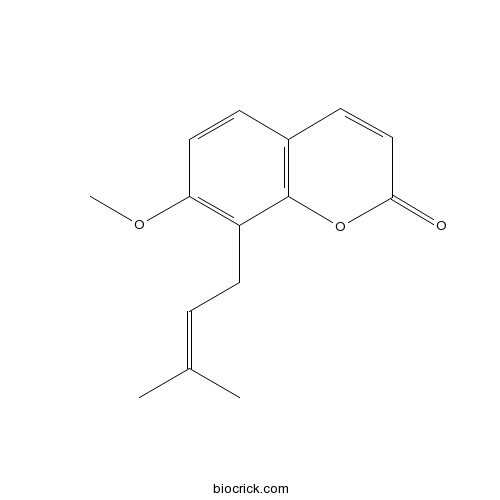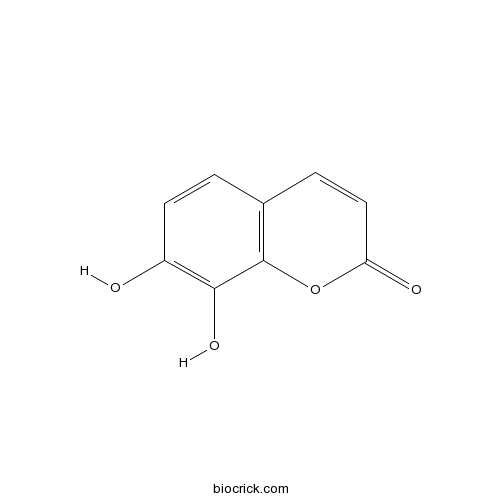Daphne tangutica
Daphne tangutica
1. The products in our compound library are selected from thousands of unique natural products; 2. It has the characteristics of diverse structure, diverse sources and wide coverage of activities; 3. Provide information on the activity of products from major journals, patents and research reports around the world, providing theoretical direction and research basis for further research and screening; 4. Free combination according to the type, source, target and disease of natural product; 5. The compound powder is placed in a covered tube and then discharged into a 10 x 10 cryostat; 6. Transport in ice pack or dry ice pack. Please store it at -20 °C as soon as possible after receiving the product, and use it as soon as possible after opening.
Natural products/compounds from Daphne tangutica
- Cat.No. Product Name CAS Number COA
-
BCN4885
Hydroxygenkwanin20243-59-8
Instructions

-
BCN5488
Genkwanin437-64-9
Instructions

-
BCN5581
Osthol484-12-8
Instructions

-
BCN1051
Daphnetin486-35-1
Instructions

-
BCN4477
Umbelliferone93-35-6
Instructions

Liquid chromatography with mass spectrometry and NMR spectroscopy based discovery of cytotoxic principles from Daphne tangutica Maxim.[Pubmed: 27062225]
An ethyl acetate extract from the barks of the ethnic Chinese medicine Daphne tangutica Maxim. exhibited antihepatocellular carcinoma activity against HepG2 and Hep3B cell lines. By using high-performance liquid chromatography based activity profiling in combination with offline liquid chromatography with mass spectrometry and NMR analysis, we rapidly identified ten major components of the extract, including seven active principles, coumarins (1-4) and biscoumarins (7, 8, 10), along with three inactive flavonoids (5, 6, 9). This study demonstrated that our combined protocol can be used as an important strategy for chemical profiling, dereplication as well as the identification of bioactive compounds from herbal medicines.
[Studies on the chemical constituents from Daphne tangutica].[Pubmed: 20432900]
To research the chemical constituents from Daphne tangutica.
Chemical constituents investigation of Daphne tangutica.[Pubmed: 19631260]
A phytochemical study of an ethanol-soluble extract from the root barks of Daphne tangutica Maxim., a traditional Tibetan herb medicine, led to the isolation of 30 compounds, including eight daphnane diterpenes, nine coumarines, six lignans, five phenylpropanoid derivatives, beta-sitosterol and p-hydroxy benzonate. Two compounds out of these isolates are new daphne diterpene analogs, and their structures were established as 1,2 alpha-dihydro-5 beta-hydroxy-6 alpha,7 alpha-epoxy-resiniferonol-14-benzonate, and 1,2 beta-dihydro-5 beta-hydroxy-6 alpha,7 alpha-epoxy-resiniferonol-14-benzonate, respectively, on the basis of spectroscopic methods. Additionally, this is the first time that 13 known compounds have been isolated and identified from this traditional Tibetan medicinal plant.
Two new flavanes and bioactive compounds from Daphne tangutica Maxim.[Pubmed: 17691052]
Two new flavanes, named daphneflavan B (1) and daphneflavan C (2), along with two known biflavonoids, daphnodorin D(1) (3) and daphnodorin D(2) (4), were isolated from the roots of Daphne tangutica Maxim. Their structures were established on the basis of chemical, physicochemical, and spectroscopic evidences. Two compounds 3 and 4 were noted to have the most marked antitumor activity in vivo assay.
Antitumor activities of extracts and compounds from the roots of Daphne tangutica Maxim.[Pubmed: 17628482]
The antitumor activities of the crude extracts of Daphne tangutica Maxim. (Thymelaeaceae) and some compounds were investigated in vivo for the first time. The eight tested samples exhibited inhibition in mice transplanted with sarcoma S180. Of the eight samples, two samples DTE-2 (mixture of daphnodorin E and daphnodorin F) and DTE-3 (syringin) were noted to have the most marked antitumor activity.


